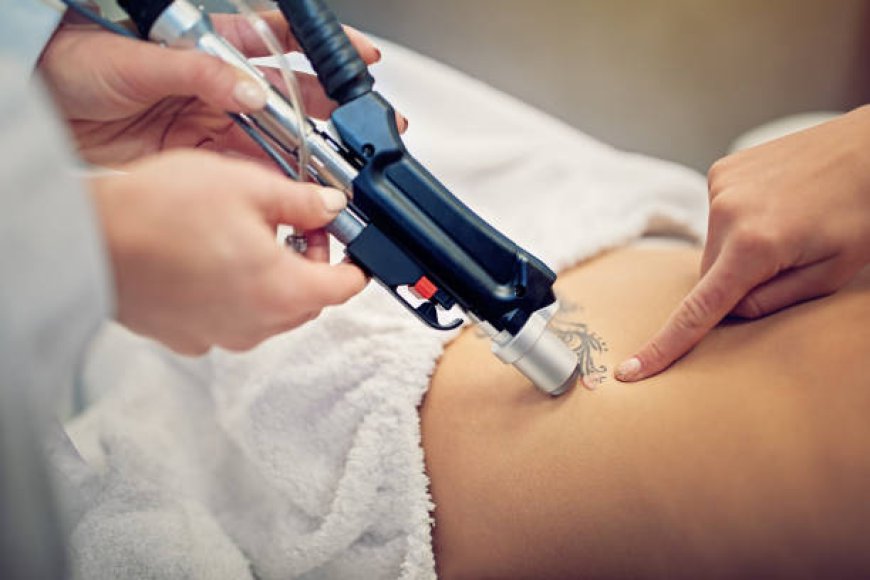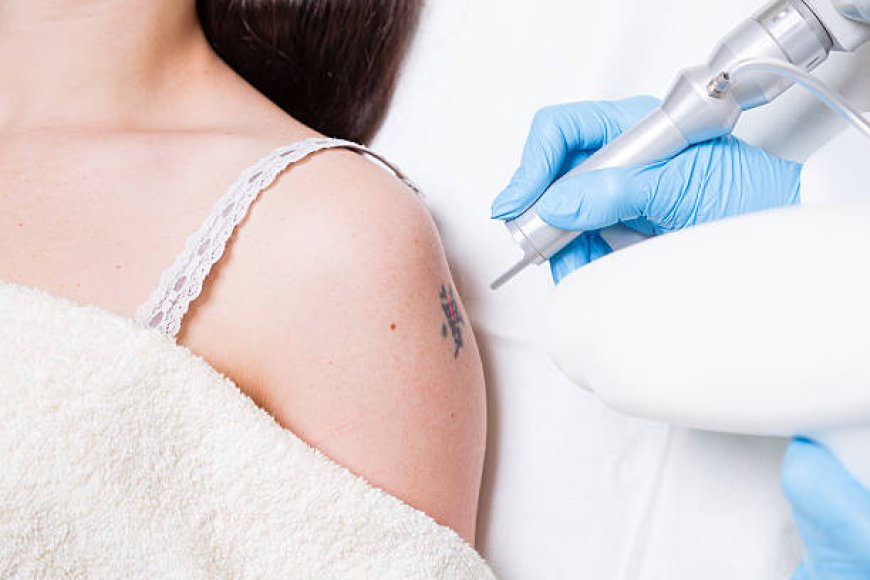Recovery Period of Laser Tattoo Removal
The pigments in tattoo ink are broken down by cutting-edge laser technology and then naturally absorbed and eliminated by the body. This non-invasive process is thought to be the most efficient and safest way to remove tattoos.

Laser tattoo removal has become a popular choice for individuals seeking to remove unwanted tattoos. While the procedure is effective, understanding the recovery period is essential for achieving optimal results. This blog will cover everything you need to know about the recovery process after Laser Tattoo Removal in Riyadh offering insights into what to expect, how to care for your skin, and tips to speed up healing.
What Happens After Laser Tattoo Removal?
Laser tattoo removal works by breaking down tattoo ink particles using concentrated laser light. Once the ink is broken down, the body's immune system works to remove the particles over time. After a session of Laser Tattoo Removal in Riyadh, your skin will undergo a healing process, which varies from person to person. It is crucial to understand this process to avoid complications and promote smooth recovery.

Immediate Post-Treatment Effects
Right after a laser tattoo removal session, the treated area might experience mild discomfort, redness, or swelling. These symptoms are normal and typically subside within a few hours to a few days. Some people may also experience slight blistering or scabbing as part of the healing process.
The Importance of Cooling the Area
Immediately after treatment, cooling the treated area can help reduce swelling and soothe the skin. Using a cold compress for 10 to 15 minutes can significantly ease discomfort. Be sure to avoid direct ice contact with the skin, as this can cause irritation.
Typical Recovery Timeline
The recovery timeline for Laser Tattoo Removal in Riyadh depends on various factors, including the size and color of the tattoo, the depth of the ink, and individual skin type. However, the general recovery timeline can be broken down as follows:
First Few Days After Treatment
During the first 24 to 72 hours after your laser tattoo removal session, you may notice redness, swelling, and slight discomfort around the treated area. These symptoms are part of the body's natural healing response and indicate that the skin is beginning to repair itself.
First Week of Recovery
Within the first week, you might notice the treated area scabbing or forming small blisters. This is a common part of the healing process, and while it may be tempting, it is essential to avoid picking at or scratching these areas. Doing so could lead to scarring or infection, slowing down the healing process.
Two to Three Weeks Post-Treatment
By the second or third week, most of the surface-level healing will be complete. The redness and swelling should subside, and any blisters or scabs will have started to heal. The treated tattoo will begin to fade during this period as the body continues to break down the ink particles.
Factors That Affect Recovery Time
Several factors influence how quickly your skin recovers after Laser Tattoo Removal in Riyadh. Understanding these factors can help you manage your expectations and ensure that you take the proper steps for a smooth recovery.
Size and Depth of the Tattoo
Larger tattoos with more intricate designs and deeper ink will generally take longer to fade and recover. The number of sessions required for complete removal can also extend the overall recovery period.
Skin Type and Healing Ability
Everyone's skin heals differently. Factors such as age, skin type, and overall health play a role in determining how quickly the skin recovers. For instance, younger individuals with good overall health may experience faster recovery than older individuals or those with underlying health conditions.
Tattoo Ink Color
Certain ink colors, such as black and dark blue, tend to respond better to laser treatment, resulting in quicker fading and recovery. On the other hand, colors like green, yellow, and light blue may require more sessions and longer recovery times.
Best Practices for a Faster Recovery
While the recovery timeline varies from person to person, there are several ways to ensure that your skin heals efficiently after Laser Tattoo Removal in Riyadh. Following these best practices can help you avoid complications and promote healthy skin regeneration.
Keep the Area Clean and Moisturized
Keeping the treated area clean is crucial to prevent infection. Gently wash the area with mild soap and water, and apply a thin layer of an antibiotic ointment or moisturizer to keep the skin hydrated.
Avoid Sun Exposure
Direct sun exposure can harm the healing skin and cause hyperpigmentation or delayed recovery. It is essential to cover the treated area with protective clothing or apply sunscreen with a high SPF if you need to be outside. Avoid tanning beds altogether during the recovery period.
Stay Hydrated and Healthy
Drinking plenty of water and maintaining a healthy diet can aid in the body’s natural healing process. Staying hydrated helps flush out broken-down ink particles more effectively, while proper nutrition supports skin repair and regeneration.
Wear Loose-Fitting Clothing
Wearing loose-fitting clothes can help prevent irritation to the treated area. Tight clothing can rub against the skin and cause unnecessary friction, which may interfere with the healing process.
Avoid Strenuous Physical Activity
Strenuous physical activity, such as heavy lifting or intense exercise, can cause sweating and friction that irritate the healing skin. It’s best to avoid such activities during the initial healing phase to prevent complications.
What to Avoid During Recovery
To ensure a smooth recovery after Laser Tattoo Removal in Riyadh, certain activities and habits should be avoided. These include:
Picking or Scratching the Area
It is vital not to pick at scabs or blisters that form after laser tattoo removal. Picking at the skin can lead to scarring or infection, prolonging the recovery process and potentially affecting the final results.
Using Harsh Skincare Products
Avoid using harsh or abrasive skincare products on the treated area, as they can irritate the skin. Products containing retinoids, acids, or alcohol should be avoided until the skin is fully healed.
Hot Baths or Showers
Hot water can exacerbate swelling and increase the risk of irritation. Stick to lukewarm showers during the recovery period and avoid soaking in hot baths or saunas.
How Long Until Full Results Are Seen?
While the recovery period after Laser Tattoo Removal in Riyadh typically spans a few weeks, achieving full results can take several months or even a year, depending on the complexity of the tattoo. Multiple treatment sessions spaced several weeks apart are usually required for complete removal. The body's immune system gradually removes the ink particles after each session, so patience is key.
Monitoring Your Progress
It’s essential to monitor your skin's progress after each session. If you notice any unusual reactions, such as severe pain, prolonged redness, or signs of infection, contact your laser tattoo removal specialist for guidance. Most issues can be resolved with appropriate aftercare and medical attention if necessary.
When Can You Resume Normal Activities?
Most people can resume their normal activities within a few days of their Laser Tattoo Removal in Riyadh session, provided they avoid activities that could irritate the treated area. Once the initial redness and swelling subside, you can gradually return to your regular routine, but always follow your specialist’s recommendations for aftercare.
Conclusion
The recovery period after Laser Tattoo Removal in Riyadh is a critical aspect of the overall tattoo removal process. Understanding the recovery timeline, following best practices, and avoiding harmful habits can help ensure a smooth and successful healing process. While results take time and patience, the outcome can lead to clear, tattoo-free skin and restored confidence. By caring for your skin properly and adhering to aftercare guidelines, you’ll be on your way to a complete and safe recovery.

 maria3211
maria3211